Nagoya is a major port and transportation hub in Japan’s Chubu region. An important industrial center, it’s Japan’s fourth largest city and home to many tourist attractions like three Toyota-related museums, a railway park, and a science museum housing one of the world’s biggest planetariums.
I enjoyed Nagoya’s museums but I loved its food even more. I left the city surprised by how good all the food was! I already knew about the magic of hitsumabushi but dishes like miso katsu and doteni caught me off guard. Everything I tried in Nagoya was delicious.
Nagoya doesn’t get as much attention as Tokyo or Osaka but I was intrigued by how much there is to see, do, and eat there. There are many interesting Nagoya attractions so whether you’re into cars, trains, culture, or Japanese food, Nagoya has something for you.
NAGOYA ATTRACTIONS QUICK LINKS
This article on the top attractions in Nagoya is long. For your convenience, we’ve compiled links to hotels, tours, and other travel-related services here.
HOTELS
Recommended hotels around Nagoya Station, the most convenient area to stay for first-time visitors to the city.
- Luxury: The Tower Hotel Nagoya
- Midrange: Hotel Vista Nagoya Nishiki
- Budget: Choukou Hotel
TOURS
- Sightseeing Tour: Private Full-Day City Tour
- Food Tour: Private and Personalized Eat Like a Local Tour
- Theme Park: LEGOLAND® Japan Resort Ticket
OTHER SERVICES
- Visa Services
- Travel Insurance (with COVID cover)
- Airport Transfers
- Japan Rail Pass
- Takayama-Hokuriku Area Tourist Pass
- Japan eSIM
NAGOYA TRAVEL GUIDE
If you’re visiting Nagoya for the first time, then be sure to check out our detailed Nagoya travel guide. It’ll have all the information you need – like when to go, where to stay, which attractions to visit, etc. – to help you plan your trip.
Save This on Pinterest!
No time to read this guide on the best things to do in Nagoya? Click on the save button and pin it for later!

THINGS TO DO IN NAGOYA
1. Enjoy Nagoya Meshi
I didn’t realize this until after my visit but Nagoya is a favorite destination for food among the Japanese. Together with Fukuoka and Hiroshima, many locals consider it to be one of the best food cities in Japan.
This was less a revelation and more a confirmation of what I had experienced during my time there. I remember being surprised by how good the food was in Nagoya. It wasn’t something I was expecting at all.
In fact, so delicious is the food in Nagoya that the Japanese even have a term for it – Nagoya meshi. Nagoya meshi means “Nagoya food” or “Nagoya cuisine”. It pertains to all the delicious dishes you can have in Nagoya like miso katsu (pictured below), hitsumabushi, kishimen, and doteni.
Because Nagoya meshi is such an important part of the local culture, no trip to Nagoya can be complete without trying its many terrific dishes. If you travel for food like we do, then exploring Nagoya meshi is one of the most fun things you can do in Nagoya. Check out our Nagoya food guide to learn what dishes to look out for.
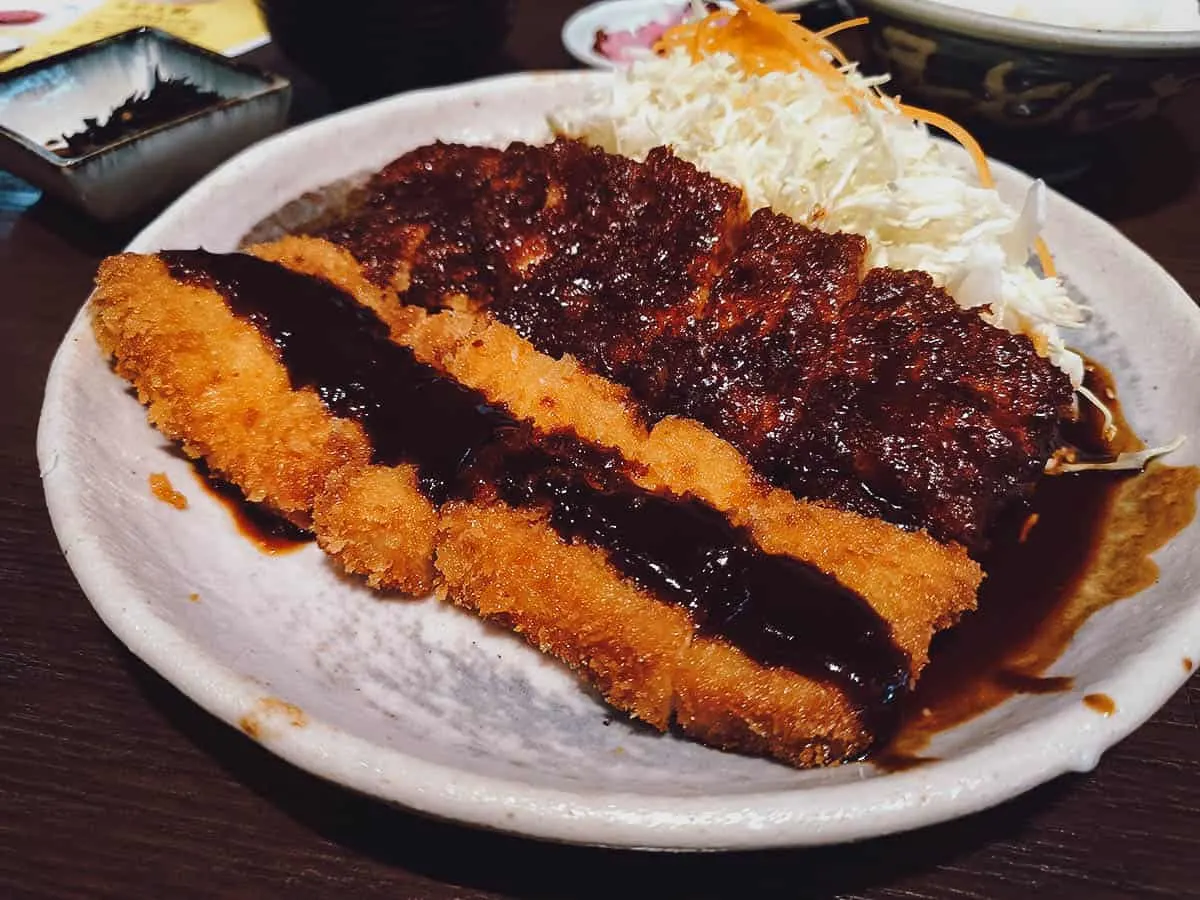
2. Explore the Toyota Techno Museum
This is one of the most visited attractions in Nagoya. Nearly everyone in the world has heard of the Toyota Motor Corporation. It’s Japan’s leading car manufacturer and one of the biggest automobile companies in the world.
Toyota was founded in Nagoya in 1911 and maintains its headquarters and many of its domestic production plants in and around the city. Visiting one or all three Toyota-related museums is one of the top things to do in Nagoya.
If you don’t have time to visit all three, then the most popular and easiest to get to is the Toyota Commemorative Museum of Industry and Technology or Toyota Techno Museum for short.
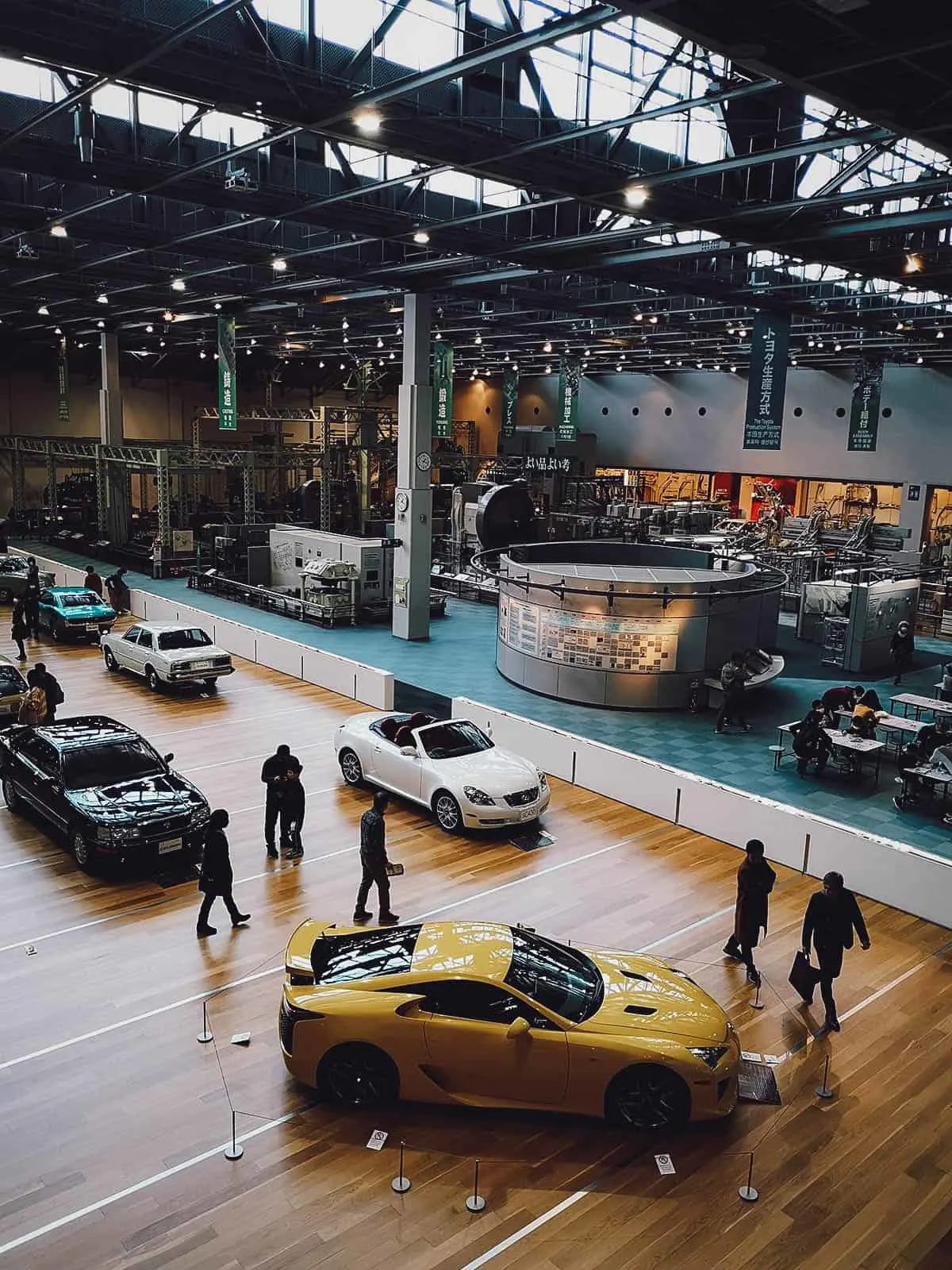
Like many people, I grew up with Toyotas but I never knew that the company didn’t actually start off as an automobile manufacturer. They started off as an automatic loom manufacturer and was named Toyoda, with a “d”, after its founder Sakichi Toyoda. A loom is an apparatus that makes fabrics.
It wasn’t until 1935 after his son Kiichiro Toyoda took over that the company started producing automobiles and was renamed Toyota. The Toyota Commemorative Museum of Industry and Technology has two sections – the first documenting its early history as an automatic loom manufacturer and the second detailing its transition into a car manufacturer.
It’s a huge museum with plenty of fascinating exhibits, many of which are interactive and come alive with the press of a button. With an entrance fee of just JPY 500, it has to be one of the most interesting and affordable attractions in Nagoya.
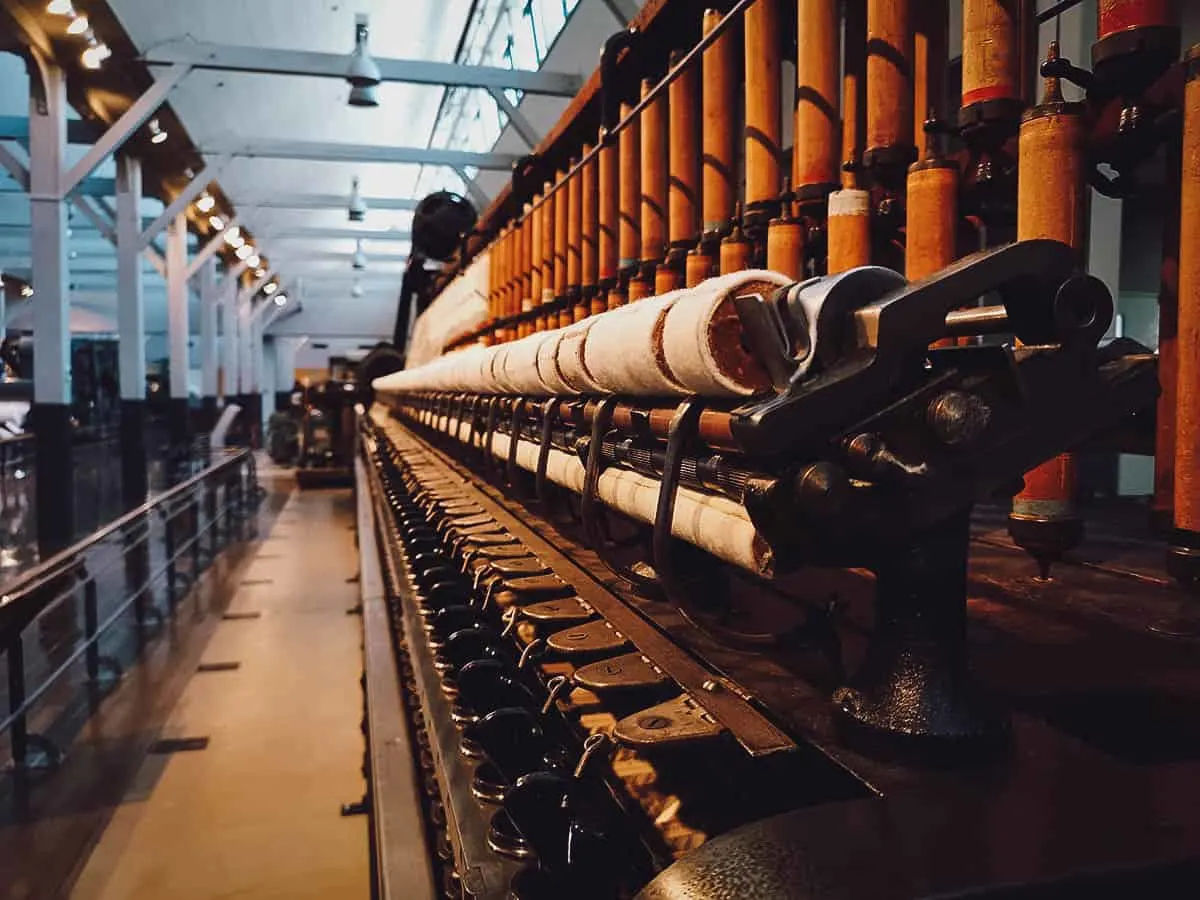
This is one of the earliest automatic looms produced by the Toyoda company. If I remember correctly, it precedes the Type G which came to be regarded as the best-performing automatic loom in the world at that time.
Toyoda didn’t transition into a car manufacturer because they weren’t succeeding in the loom business. On the contrary, the were pioneers in both.
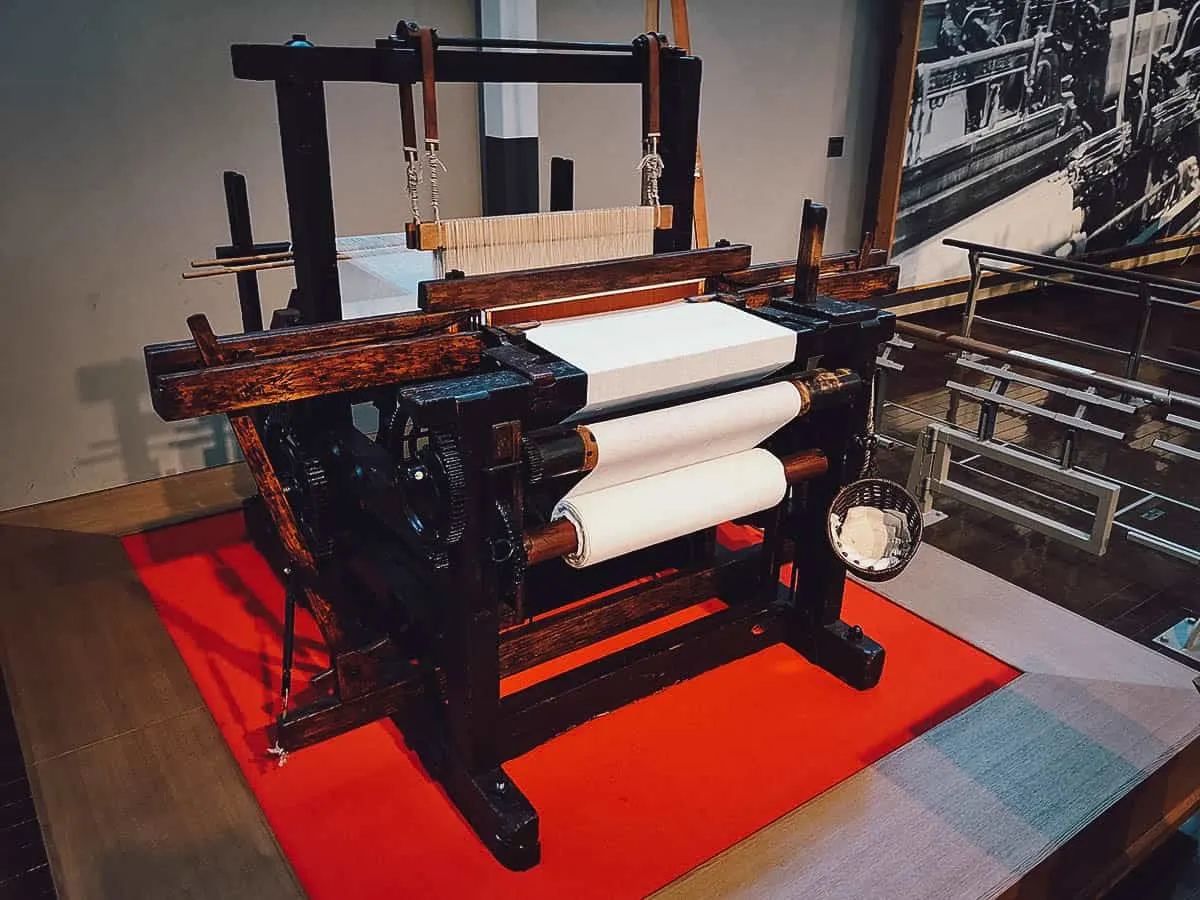
Pictured below is the very first passenger car mass-produced by Toyota – the AA Standard Sedan. The Toyota AA was the first passenger car but it wasn’t the first automobile they produced. That distinction goes to the Toyota G1, a 6 meter (20 ft) long truck with a carrying capacity of 1.5 tons.
I loved the Toyota Techno Museum and spent the entire afternoon there. With more time, I would have loved to visit the other two Toyota museums as well – the Toyota Kaikan Museum and the Toyota Automobile Museum. Unlike the Toyota Techno Museum that’s located in the city center, the other two are located about an hour away by train from central Nagoya.
The Toyota Kaikan Museum is located next to the company headquarters and offers plant tours while the Toyota Automobile Museum showcases Japanese, European, and American cars produced from the late 1800s to the 1960s. If you’re a car enthusiast, then you’ll probably want to visit all three.
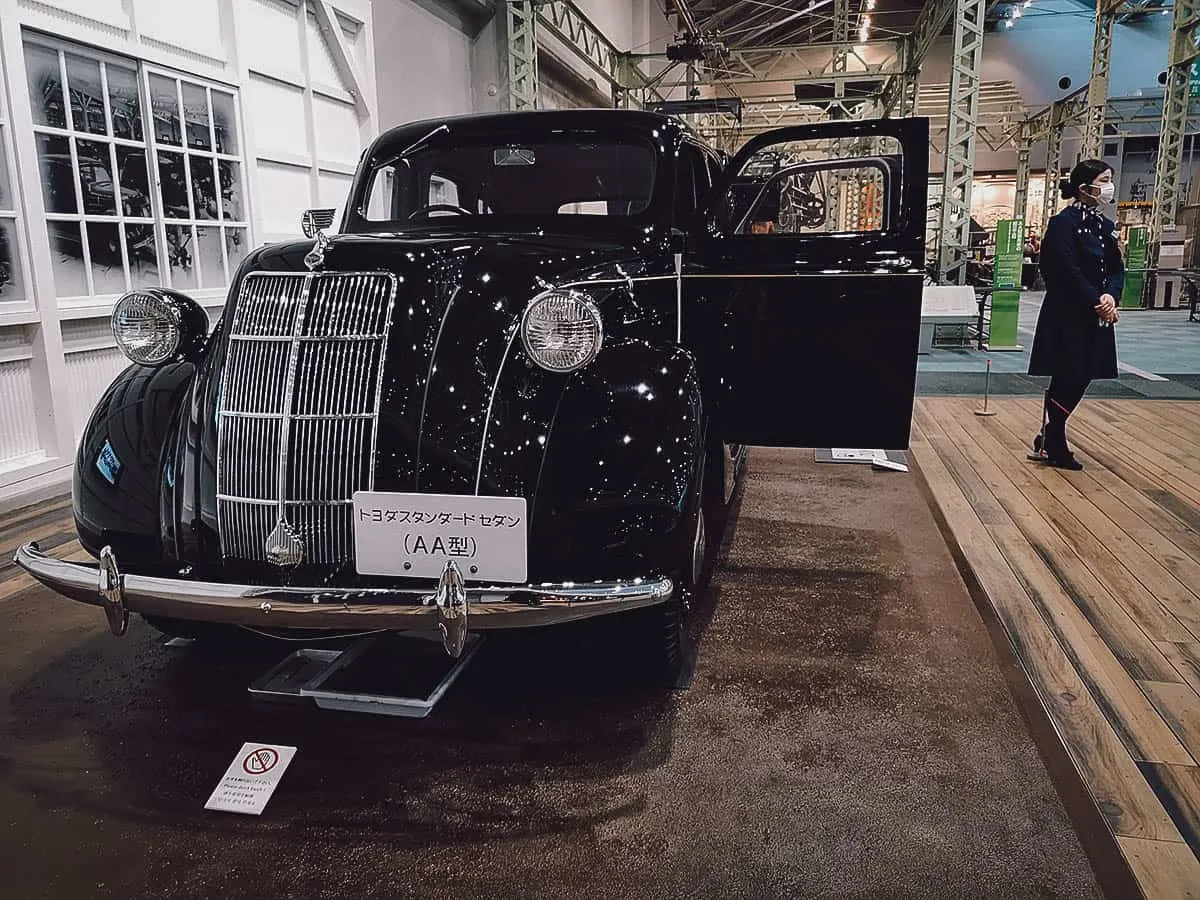
Operating Hours: 9:30AM-5PM, Tue-Sun (closed Mondays)
Admission: JPY 500
3. Visit the Nagoya City Science Museum
I was supposed to visit the Nagoya City Science Museum after the Toyota Techno Museum, but I enjoyed the Techno Museum so much I would up spending all of my time there.
As its name suggests, the museum features exhibits dedicated to science and modern technology. It known for its giant silver globe that houses one of the world’s biggest planetariums. Unfortunately, shows at the planetarium are conducted only in Japanese, but seeing the visuals may be cool enough.
If you’re traveling with kids or enjoy interactive science exhibits, then visiting the City Science Museum is a great way to spend the day in Nagoya. It features seven floors of permanent and temporary exhibits, some of the most popular being the Tornado Lab, Electric Discharge Lab, and the Deep Freezing Lab.
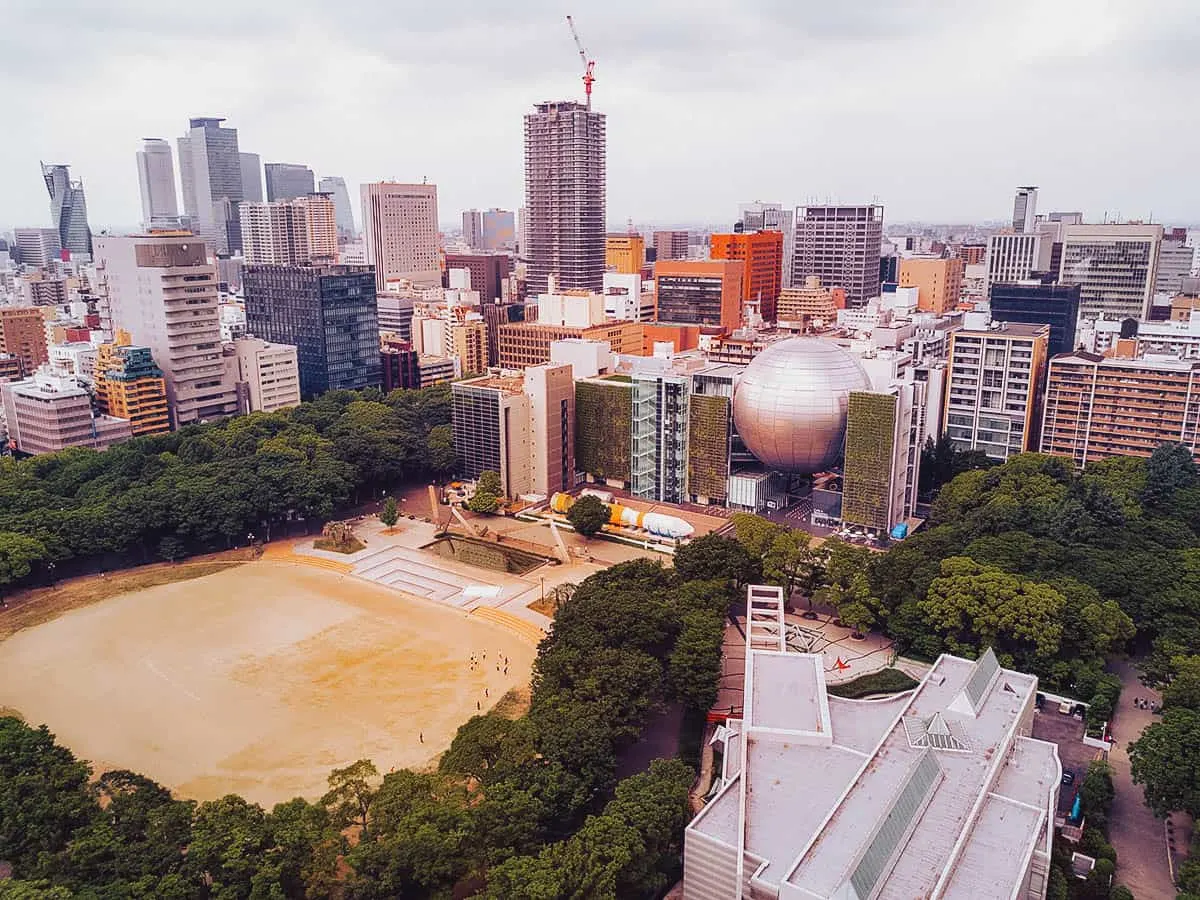
Photo by Aberu.Go via Shutterstock
Operating Hours: 9:30AM-5PM, daily
Admission: JPY 400
4. Go Trainspotting at SCMAGLEV and Railway Park
Japan has arguably the most enviable railway system in the world. It’s extensive, efficient, and accurate to the minute. Planes are faster and buses are cheaper but trains are the preferred means of travel in Japan.
If you have a fascination for trains or are interested in learning more about Japan’s highly efficient railway system, then you may be interested in visiting The SCMAGLEV and Railway Park. It’s the museum of Central Japan Railways (more commonly known as JR Central) and is one of the most unique attractions in Nagoya.
The museum features over three dozen retired trains – many of which you can enter – from historic steam locomotives to the shinkansen to the most modern magnetic levitating trains.
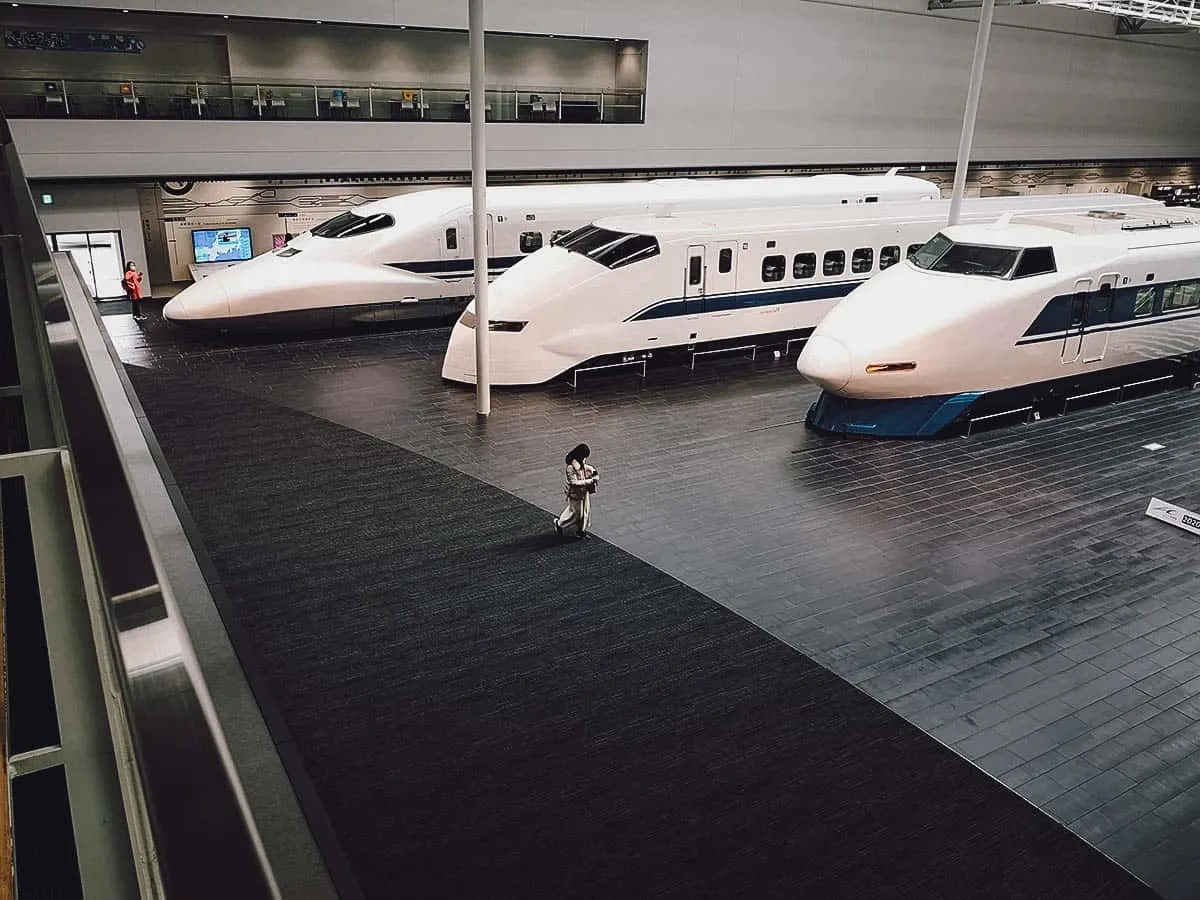
On one end of the main exhibit hall are the museum’s steam and electric locomotive trains. The oldest of these locomotives date back to the early 20th century.
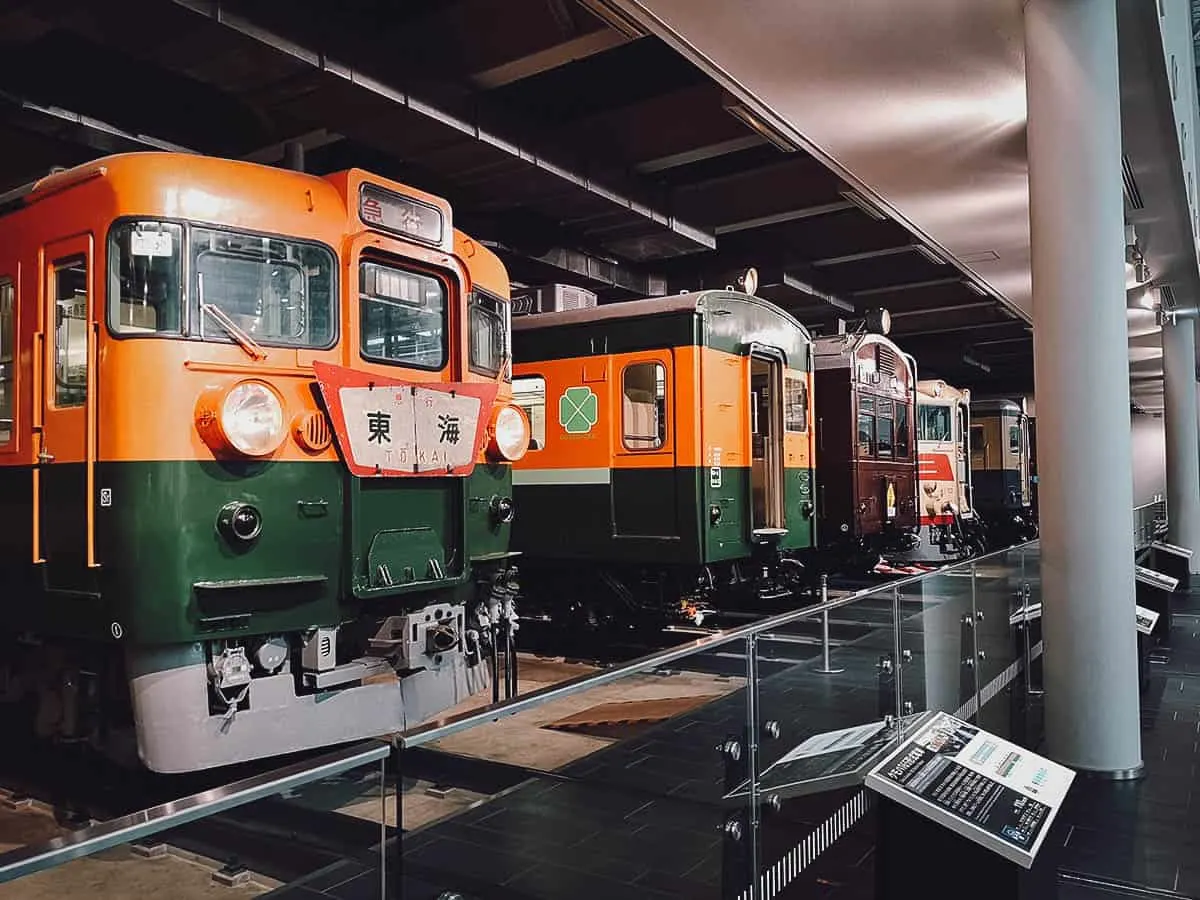
Pictured in the foreground below is the superconducting maglev train, or SCMaglev for short. With its aerodynamic nose resembling a duck’s bill, the SCMaglev topped out at 603 km/h (375 mph), making it the fastest rail vehicle ever created.
High speed maglev links connecting Tokyo with Nagoya and Tokyo with Osaka are currently underway and estimated to open in 2027 and 2045 respectively.
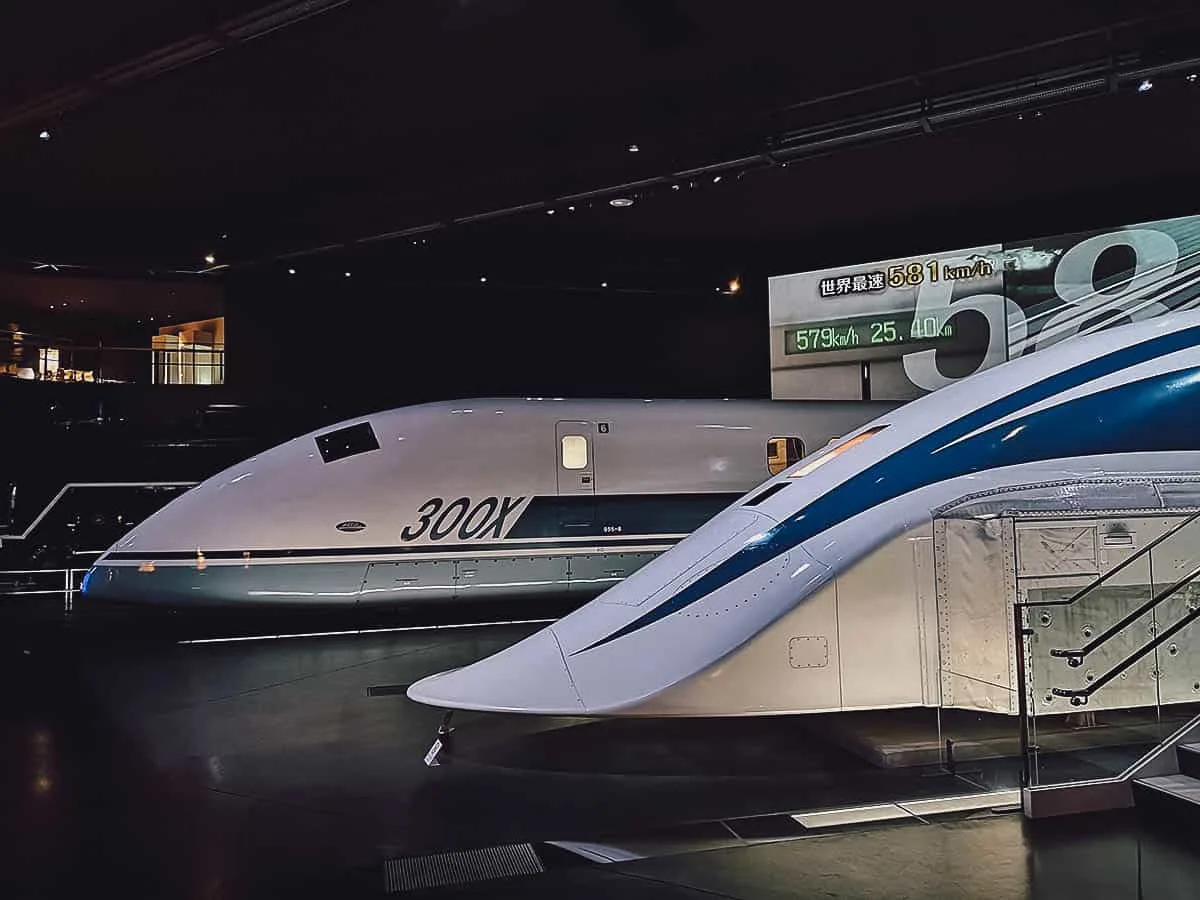
Operating Hours: 10AM-5:30PM, daily
Admission: JPY 1,000
5. Spend the Day at Legoland
I didn’t even know there was a Legoland in Nagoya until I got off the metro to go to SCAMGLEV & Railway Park. As you can probably guess from its name, Legoland is an amusement park inspired by the iconic Lego bricks.
Legoland features theme park rides, large Lego models, games, souvenir and hobby shops, and restaurants. It’s geared towards younger children so if you’re visiting Nagoya with kids, then a day at Legoland should be at the top of your Nagoya itinerary.
The theme park is located near SCAMGLEV & Railway Park, at Kinjofuto Station which is the last stop on the Aonami Line. If you go early enough, then it’s possible to visit both attractions on the same day.
You can purchase tickets at the gate or in advance through Klook. They offer combo tickets that include entrance to Legoland Japan and Sea Life Nagoya, a small aquarium located right next to the theme park.
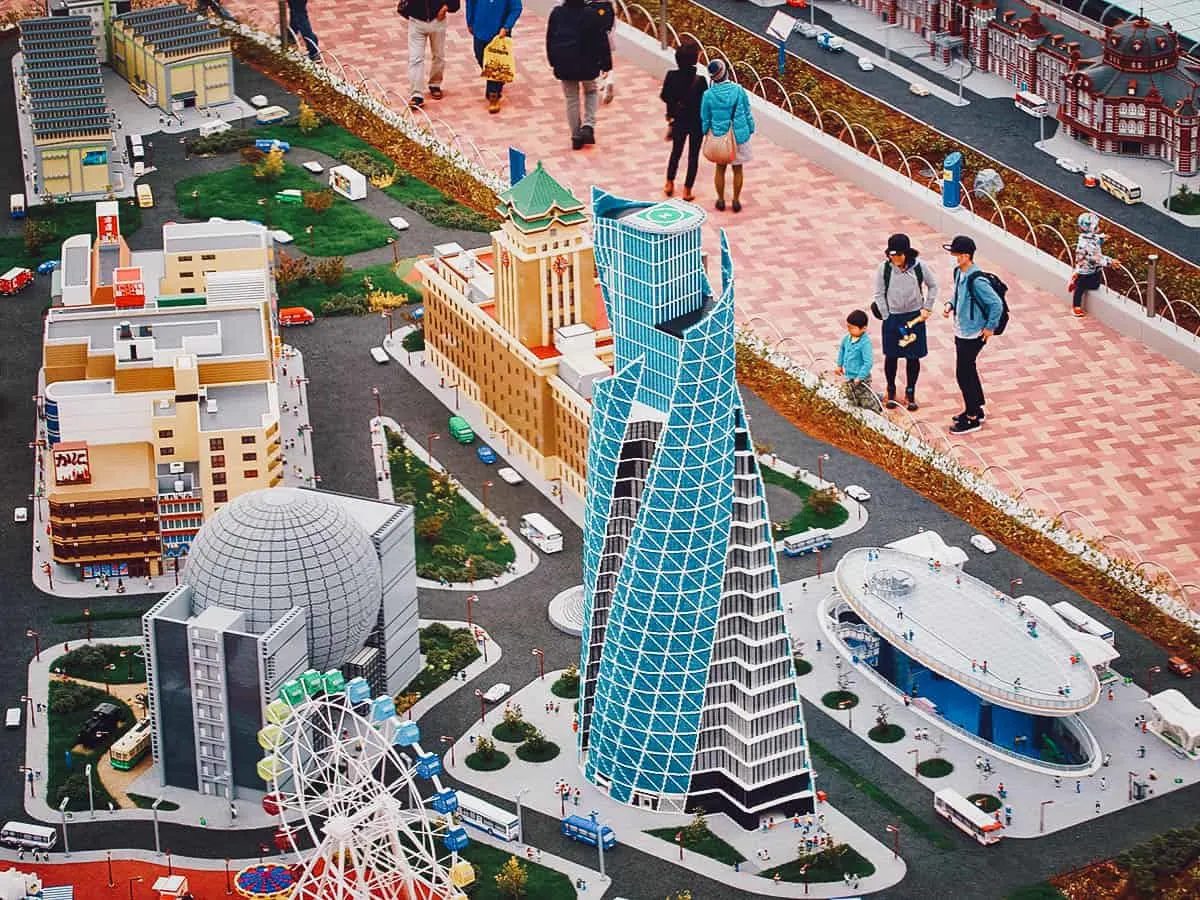
“NAGOYA Spiral Towers” by S.Brickman, used under CC BY-SA 2.0 / Processed in Photoshop and Lightroom
Operating Hours: legoland.jp
Admission: Starts at JPY 3,400 (kids), JPY 4,600 (adults)
6. Enjoy Peace and Calm at Atsuta Shrine
I’ve been to many temples and shrines in Japan. After a while, they started to lose their novelty but in Nagoya, they were a welcome sight. Compared to less modernized destinations in Japan, Nagoya feels more urban and industrialized so it was nice to sit down and enjoy the peace and quiet of Atsuta Shrine.
Located within a forested area in southern Nagoya, Atsuta Shrine is one of Japan’s most important Shinto shrines. It was established sometime between 71 and 130 AD to house the Kusanagi no Tsurugi, an ancient sword that’s considered one of the Three Sacred Treasures of Japan.
The shrine complex occupies a large wooded area of about 200,000 square meters (2,153,000 sq ft). Aside from the main shrine, it features many smaller shrines along a network of walking trails. Exploring the temple grounds is one of the most relaxing things you can do in Nagoya.
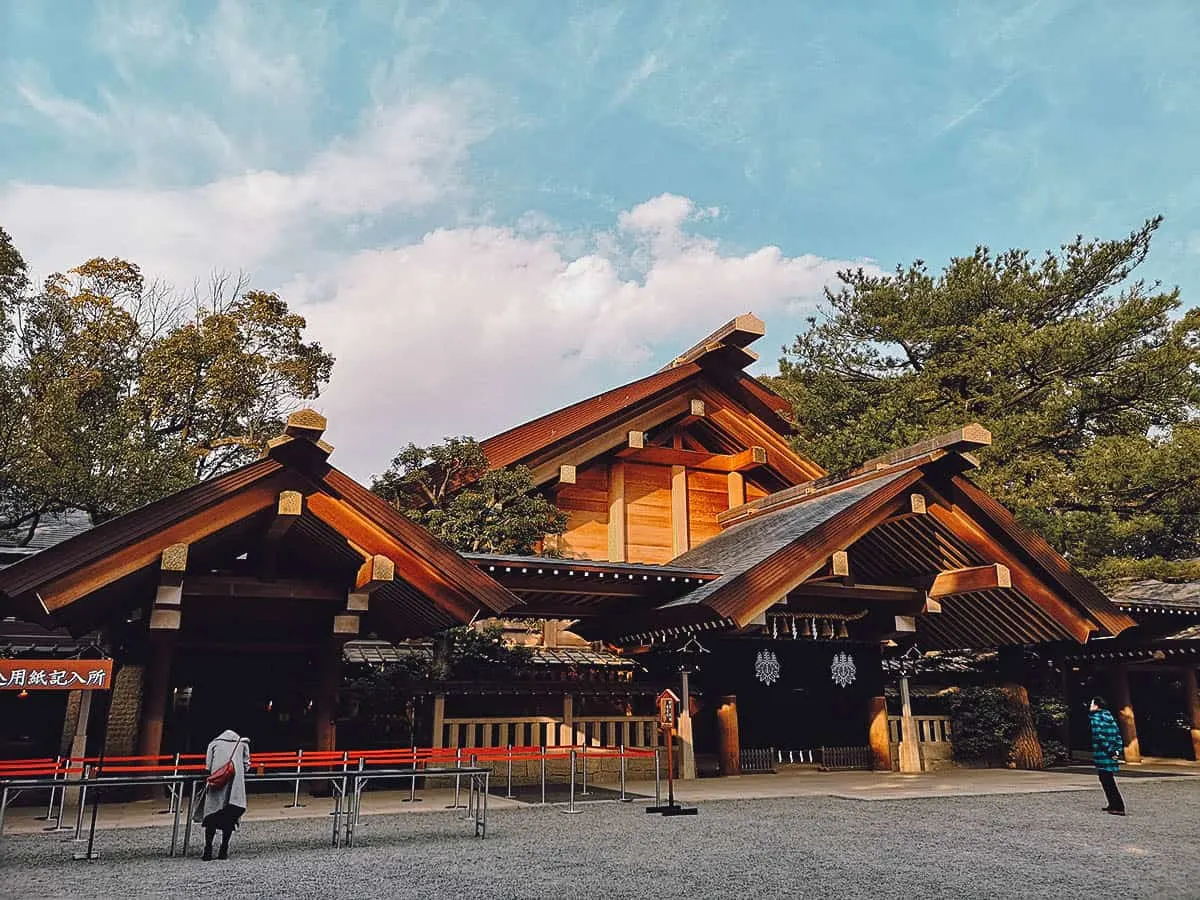
Operating Hours: 24 hrs
Admission: FREE
7. Take a Stroll at Shirotori Garden
Located less than a kilometer from Atsuta Shrine is Shirotori Garden, a Japanese landscaped garden covering an area of almost four hectares.
I’ve been to a few landscaped gardens in Japan, including Shukkei-en in Hiroshima, Koishikawa Korakuen in Tokyo, and the spectacular Kenroku-en in Kanazawa. After visiting Atsuta Shrine, I was excited to visit Shirotori Garden as well only to find it closed on a Monday. Bummer.
Like any Japanese garden, Shirotori Garden is meant to represent Japan’s landscapes in miniature. Certain features within the garden symbolize real-life geographical elements in the Chubu region like Mt. Ontake, the Kiso River, and Ise Bay.
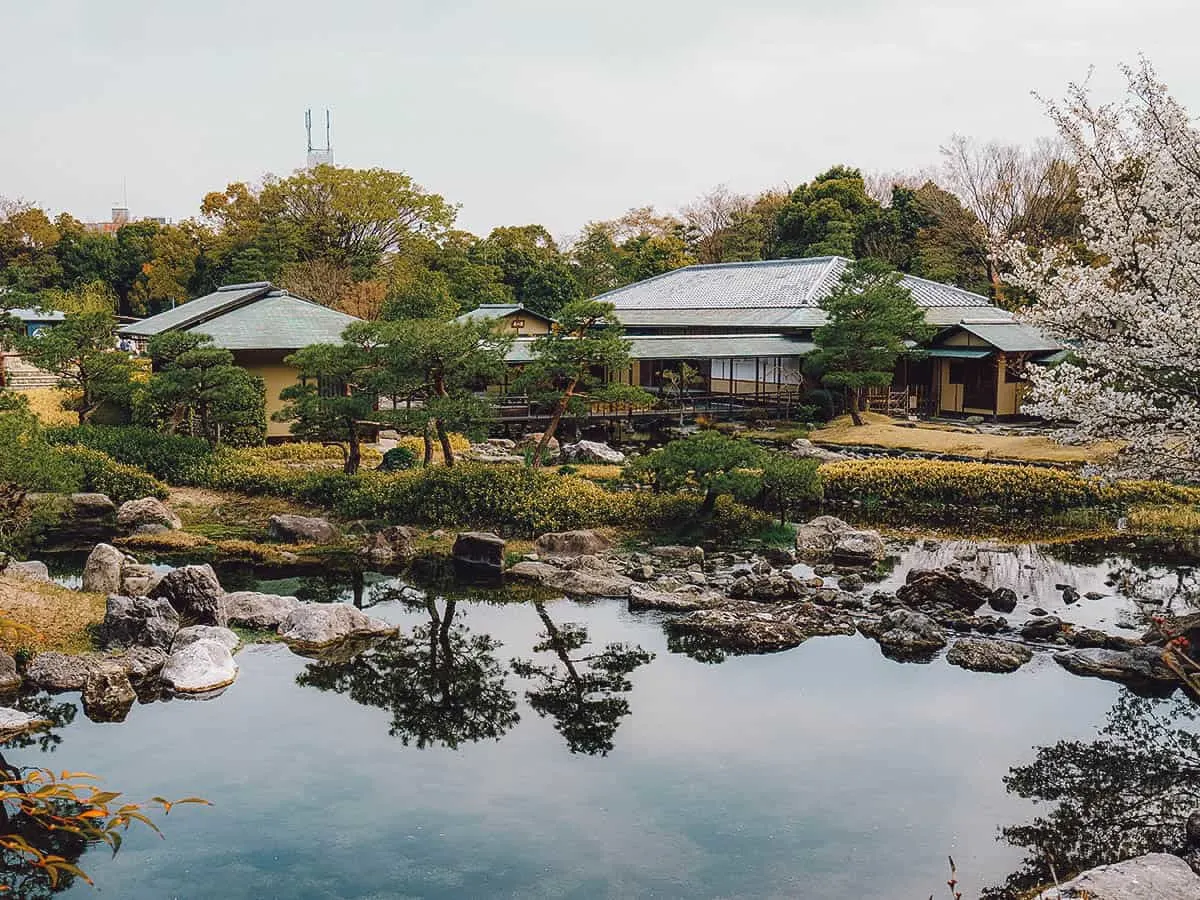
Photo by rolling rock via Shutterstock
Operating Hours: 9AM-5PM, Tue-Sun (closed Mondays)
Admission: JPY 300
8. Explore Oasis 21 and Nagoya TV Tower
The observation decks of Nagoya Tower, the oldest TV tower in Japan, is literally one of the top things to do in Nagoya. It stands at 180 meters tall (591 ft) and boasts two observation decks – the indoor Skydeck and the outdoor Sky Balcony at 90 meters (295 ft) and 100 meters (398 ft) above the ground.
After enjoying the views, you can cross the street and do some shopping at Oasis 21 – a futuristic shopping complex and bus terminal known for its unique glass rooftop called “Spaceship Aqua” (pictured below). It’s remarkable during the day but even more so at night when the glass walkway is illuminated from underneath.
Spaceship Aqua is free but you’ll need to purchase tickets to go up to the observation decks of Nagoya TV Tower. You can get them at the gate or in advance through Klook.
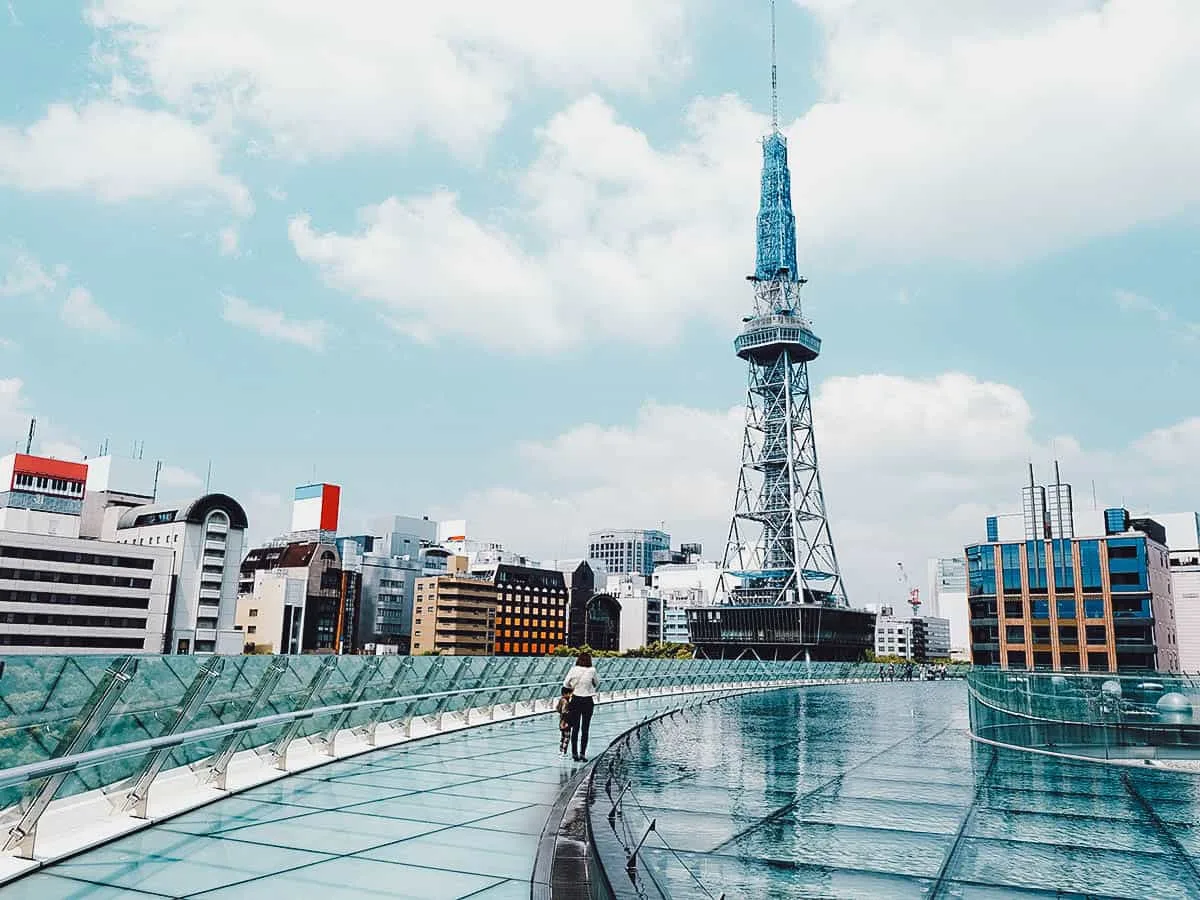
Photo by cozyta via Shutterstock
Operating Hours: 10AM-10PM, daily
Admission: JPY 900 (Nagoya TV Tower)
9. Visit Nagoya Castle
Nagoya Castle was built during the early Edo period and was at one point one of the biggest castles in Japan. It was completed in 1612 and features a five-story main keep supported by distinctive fan-shaped sloping stone walls.
Sadly, like many of Japan’s original castles, much of Nagoya Castle was destroyed in the air raids of WWII. The only surviving original structures are Omote-Ninomon Gate and three corner turrets. Most of what you see today is a ferroconcrete reconstruction dating back to 1959.
Since May 2018, the castle has been undergoing a total reconstruction in wood so it more closely resembles the original design. It’ll be closed until its unveiling in 2022, though the castle grounds and Honmaru Palace will remain open to visitors.
Numerous cherry trees are planted throughout the castle grounds, making it one of the most popular spots in Nagoya to view the cherry blossoms in spring. Once it’s fully open to the public, it will surely be one of the most visited tourist attractions in Nagoya.
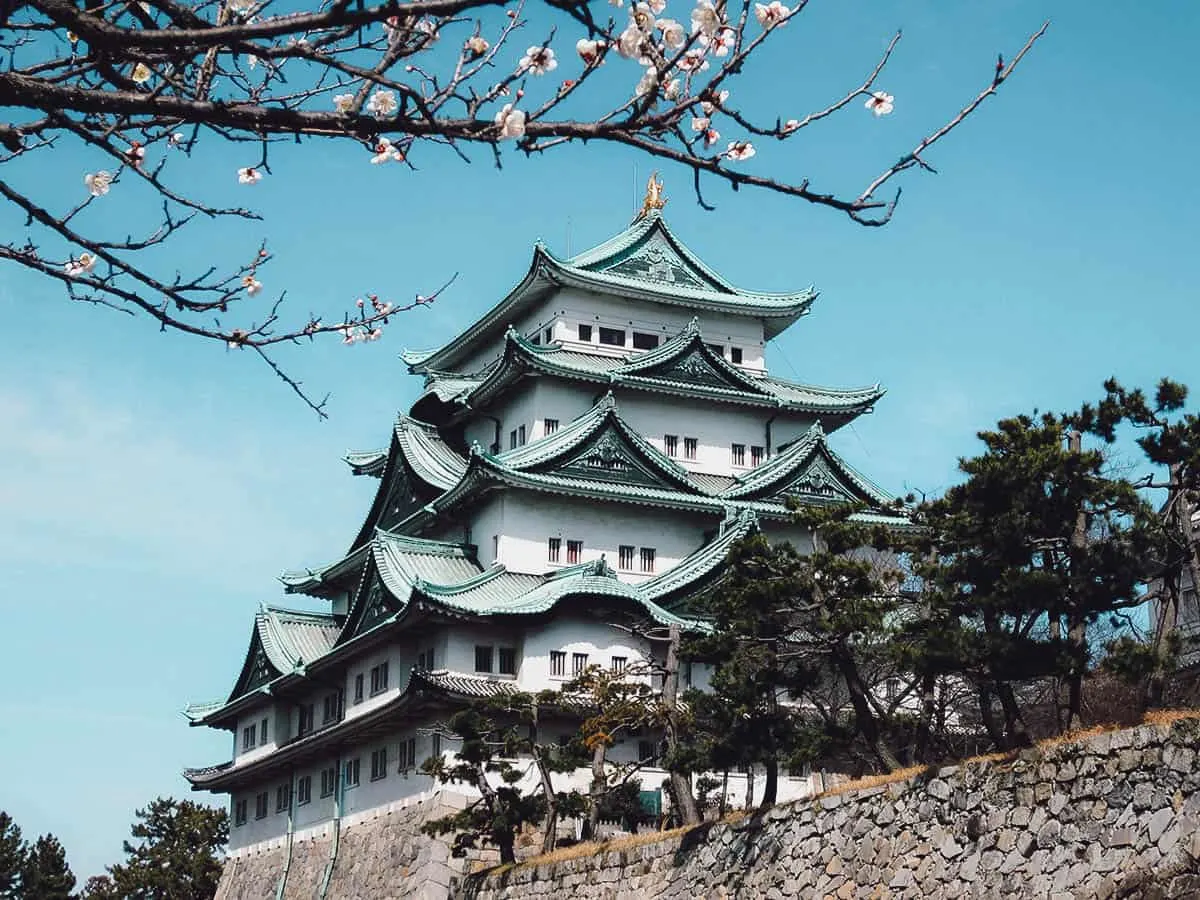
Photo by Tonic Ray via Shutterstock
Operating Hours: 9AM-4:30PM, daily
Admission: JPY 500
10. Walk Through a Tunnel of Light at Nabana no Sato
If you visit Nagoya anytime between mid-October and early May, then you may want to visit Nabana no Sato, a botanical garden located in neighboring Kuwana City. It’s home to one of the largest and longest illumination events in Japan.
Most illumination events in Japan are held for just a few weeks in winter, but the Nabana no Sato Illumination extends to nearly seven months. It features seven installations with over 8 million LED lights illuminating an area of about 210,000 square meters (2,260,000 sq ft). Among the most popular installations are two tunnels of light, each over 100 meters (328 ft) long and illuminated by flower-shaped LED lights.
Nabana no Sato is part of Nagashima Resort in Mie prefecture. Aside from the botanical gardens, the resort is home to Nagashima Spa Land amusement park, a water park, a hot spring complex, and an outlet shopping mall. It’s located just 40 minutes by bus from Meitetsu Bus Center making it an ideal day trip destination from Nagoya.
It’s easy enough to go to Nabana no Sato on you own using public transportation, but if you’d like to go on an organized tour, then you can book one through Klook (option 1 | option 2).
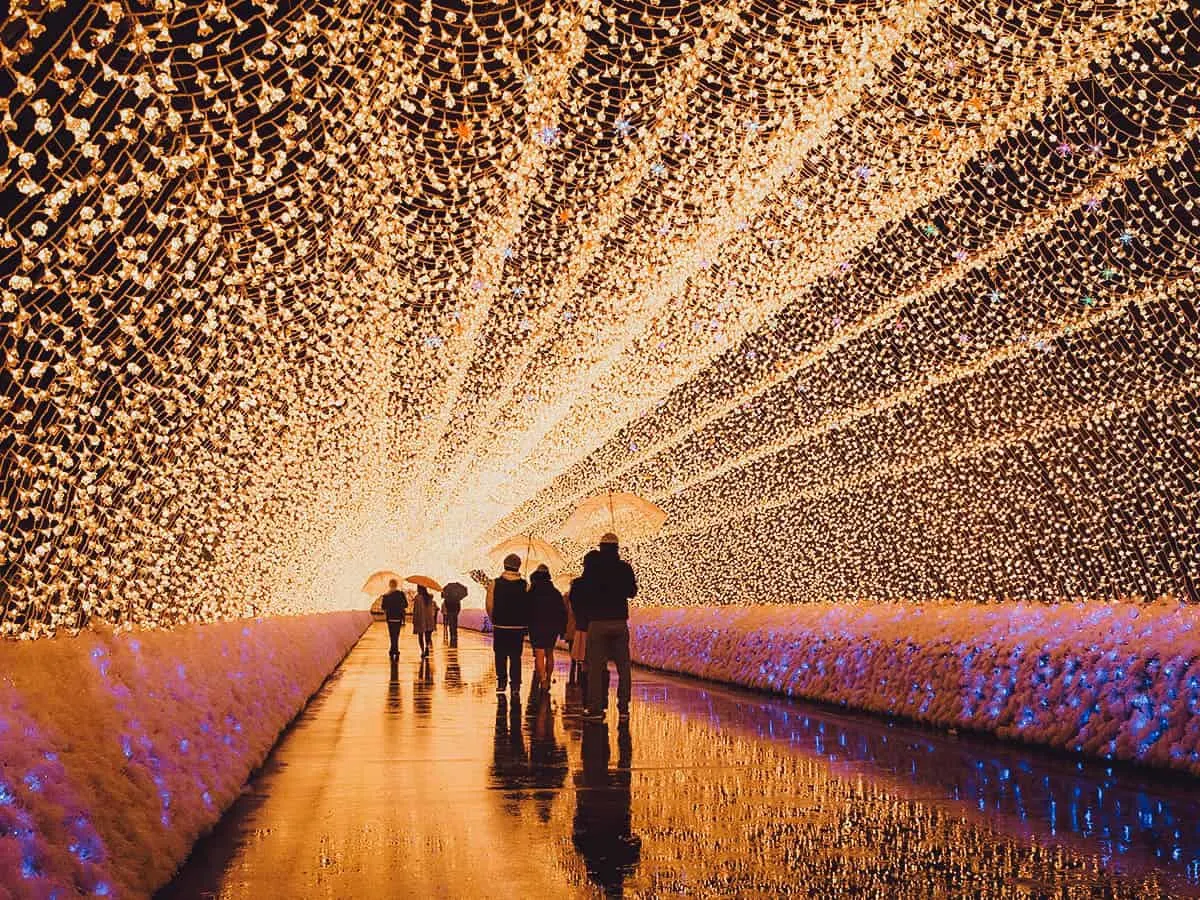
Photo by Phubet Juntarungsee via Shutterstock
Illumination Schedule: Around mid-October till early May
Admission: JPY 2,300
FINAL THOUGHTS ON THE TOP ATTRACTIONS IN NAGOYA
I wasn’t expecting much from Nagoya but I left intrigued with its possibilities. As much as I enjoyed the city, I can’t say I fell in love with it. It lacks the charm and atmosphere of more traditional destinations like Kyoto or Takayama, which at the end of the day is what I love most about Japan.
With that said, I’m looking forward to going back. I want to visit the other two Toyota museums and all the other Nagoya attractions I missed because at the time, I didn’t put enough stock in this city to plan as well as I should have. I hope this guide on the best things to do in Nagoya helps you plan your trip well so you don’t make the same mistakes I did.
If you plan on exploring Nagoya and other cities within the Chubu region like Kanazawa, Takayama, Fukui, and Shirakawa-go, then you may be interested in getting a Takayama Hokuriku Pass. It’s a rail pass that gives you unlimited travel on JR trains within the Chubu region for five consecutive days. Check out our 5-day Chubu itinerary to help you plan your trip.
Disclosure
Some of the links in this article on the top attractions in Nagoya are affiliate links, meaning we’ll earn a small commission if you make a booking at no additional cost to you. As always, we only recommend products and services that we use ourselves and firmly believe in. We truly appreciate your support as this helps us make more of these free travel guides. Thank you!


Jane
Wednesday 5th of April 2023
This article is a truly awesome read and one to share. I have dreams of living in Japan for a year.